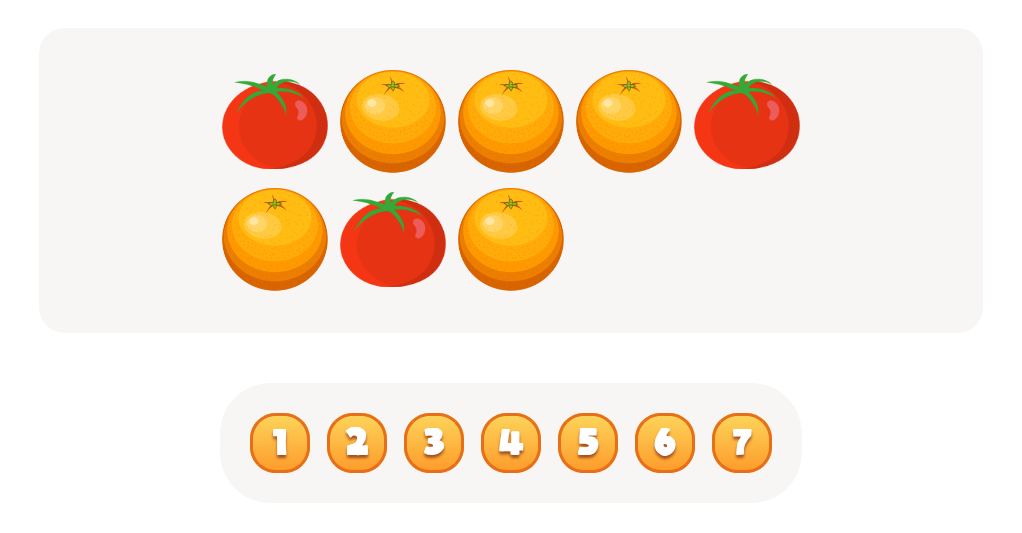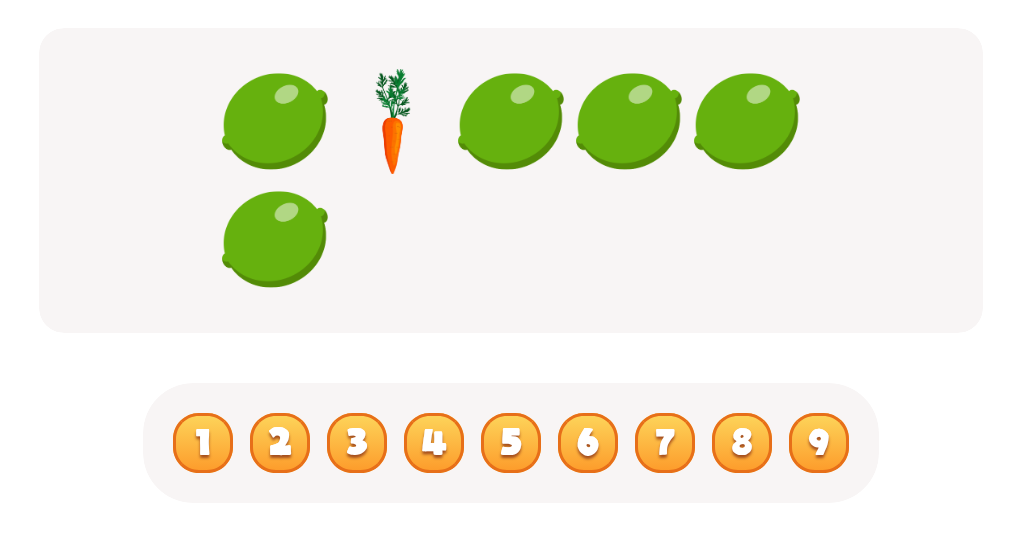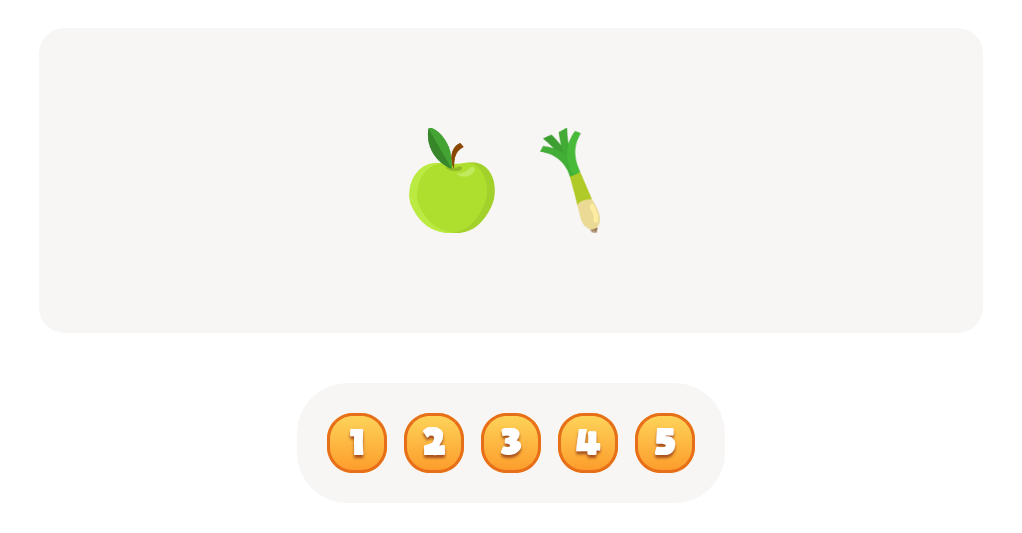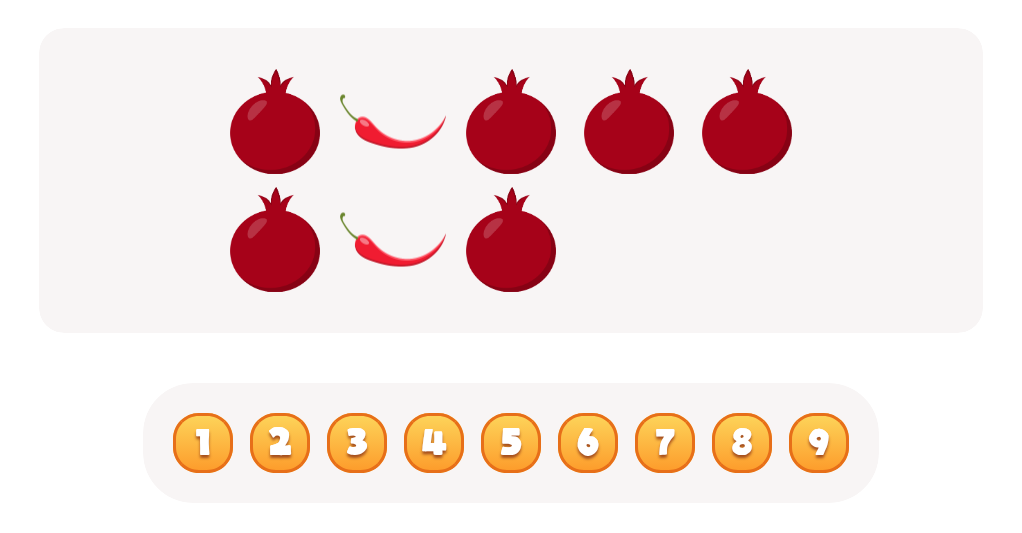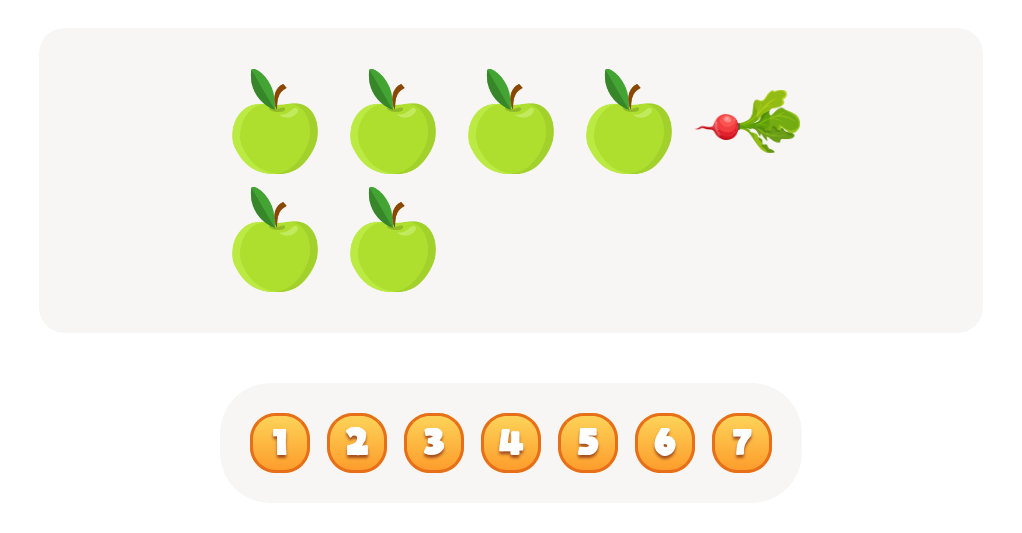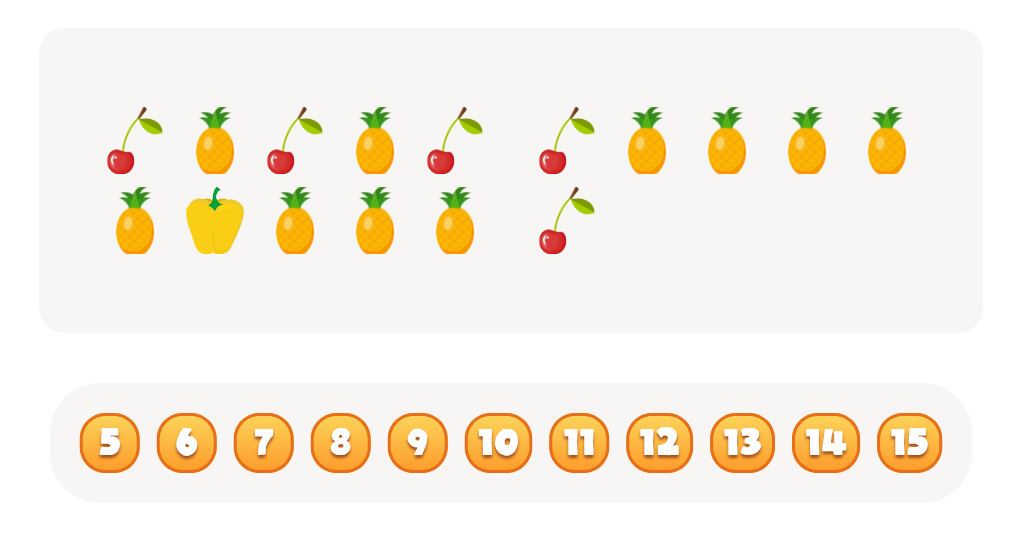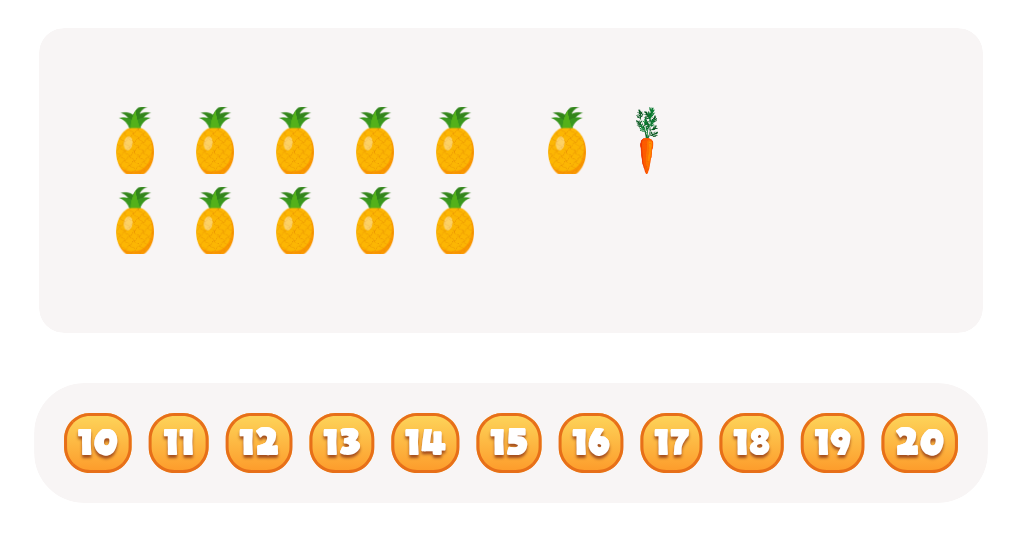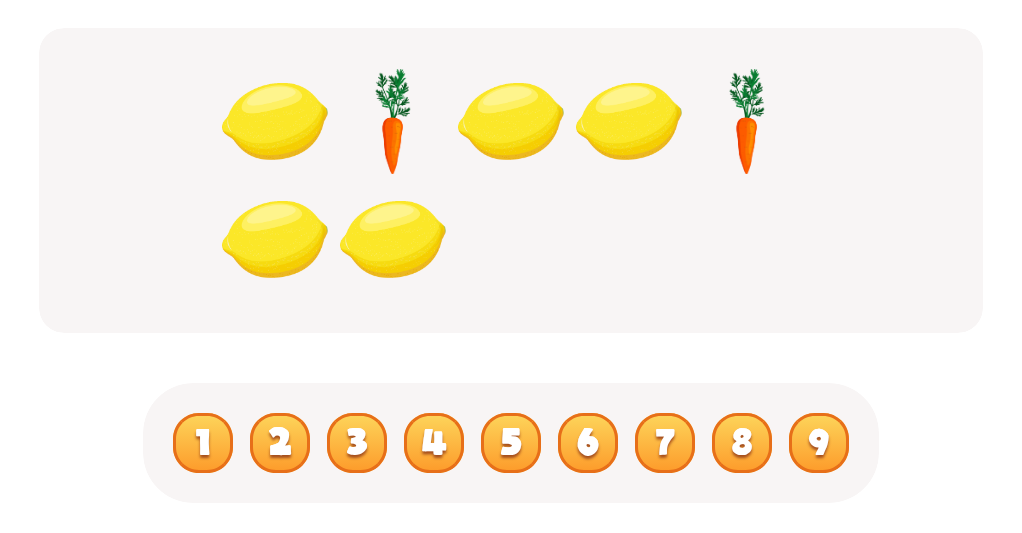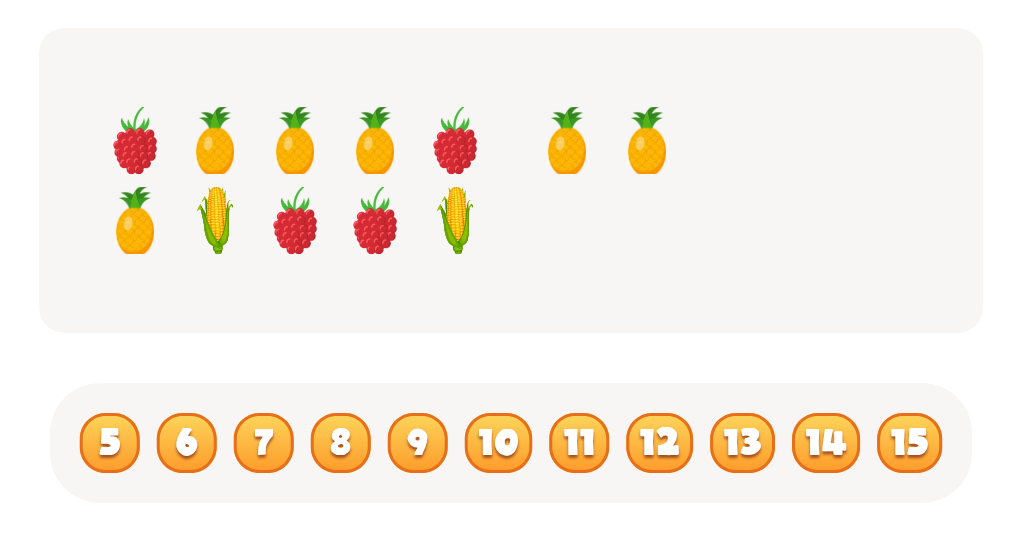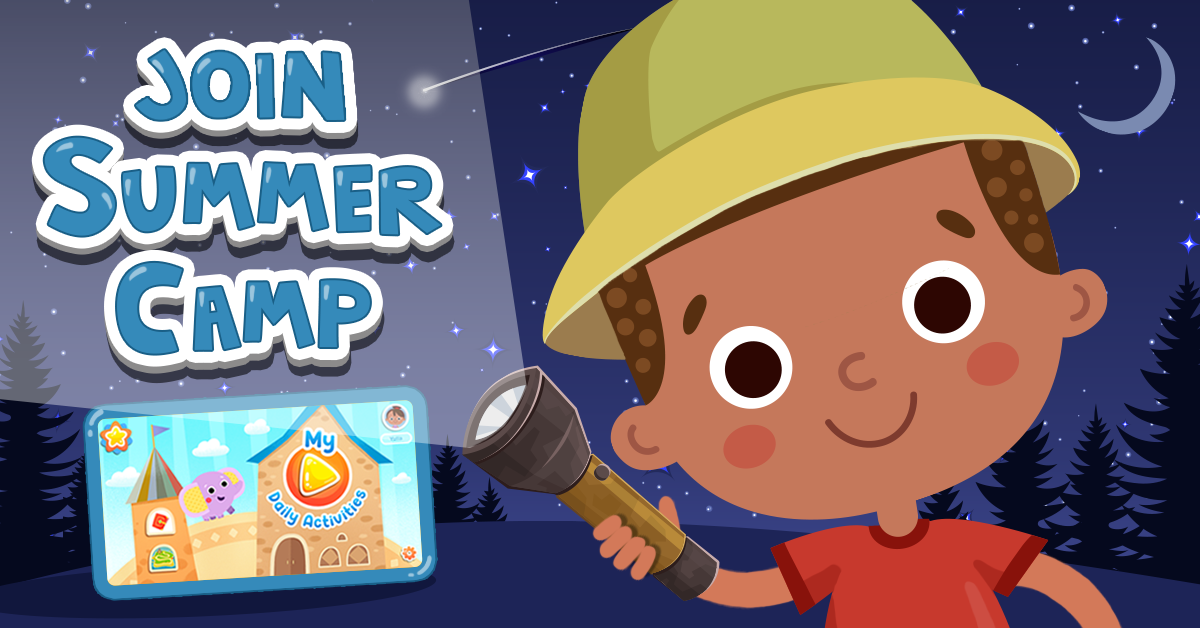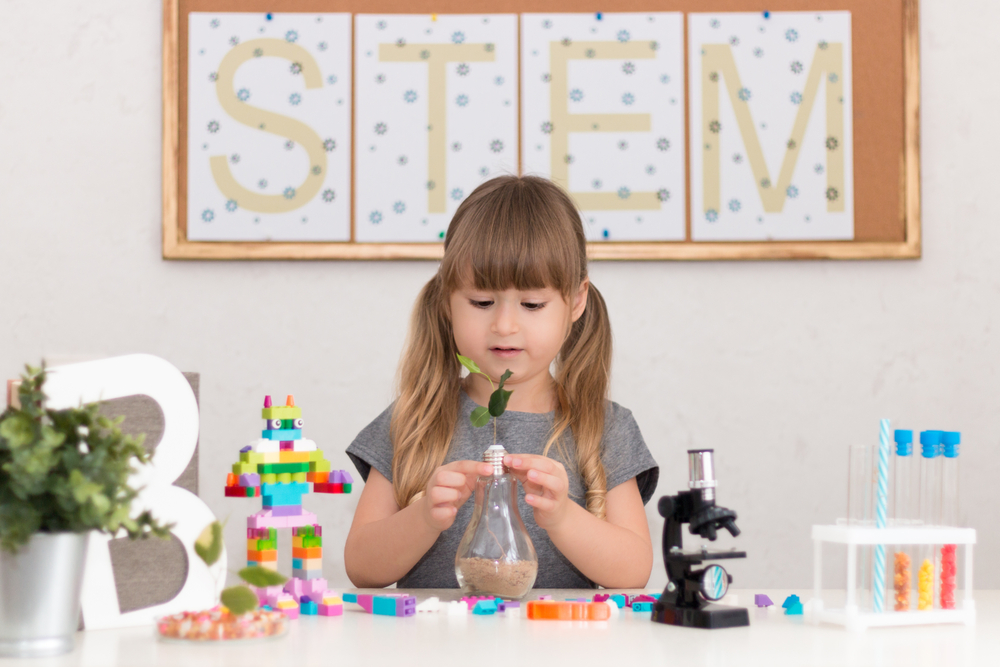Understanding life cycles Plants and Animals Worksheets for Ages 7-8
6 filtered results
-
From - To
Explore our engaging "Understanding Life Cycles: Plants and Animals Worksheets" designed specifically for ages 7-8! These interactive and educational worksheets provide young learners with a comprehensive understanding of the life cycles of various plants and animals. Through colorful illustrations and age-appropriate activities, children will discover the stages from birth to maturity, enhancing their knowledge in science. Each worksheet encourages critical thinking and creativity as students observe, compare, and question the fascinating processes of life. Perfect for classrooms or at-home learning, our resources help nurture curiosity and a love for nature. Jumpstart your child’s scientific journey today!


Saguaro Cactus Life Cycle Worksheet
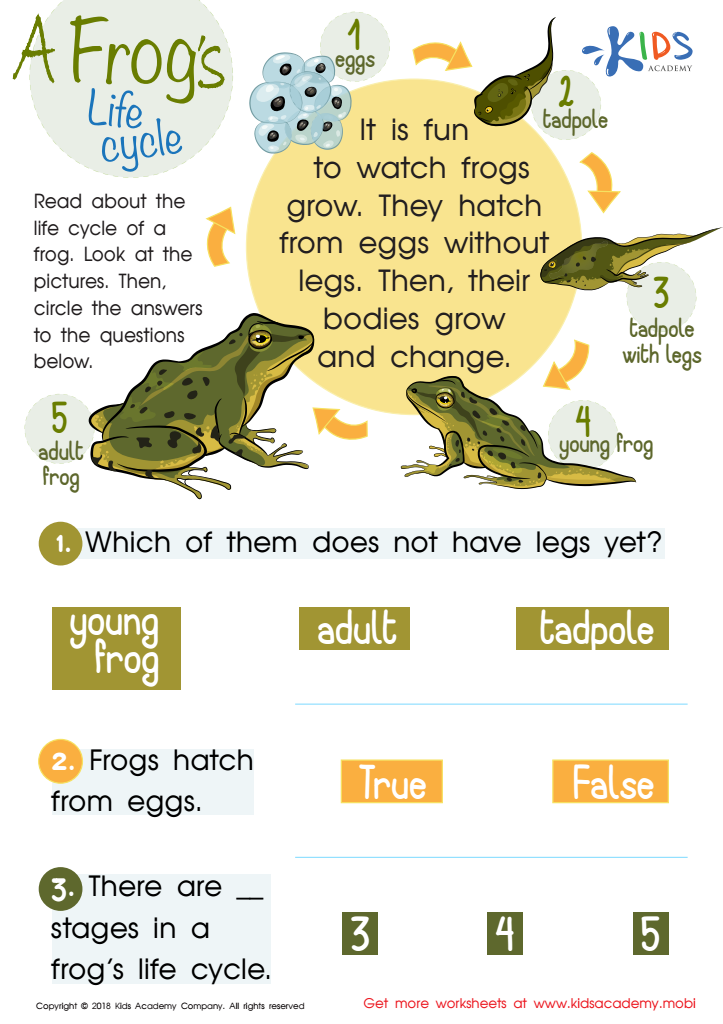

A Frog’s Life Cycle Worksheet
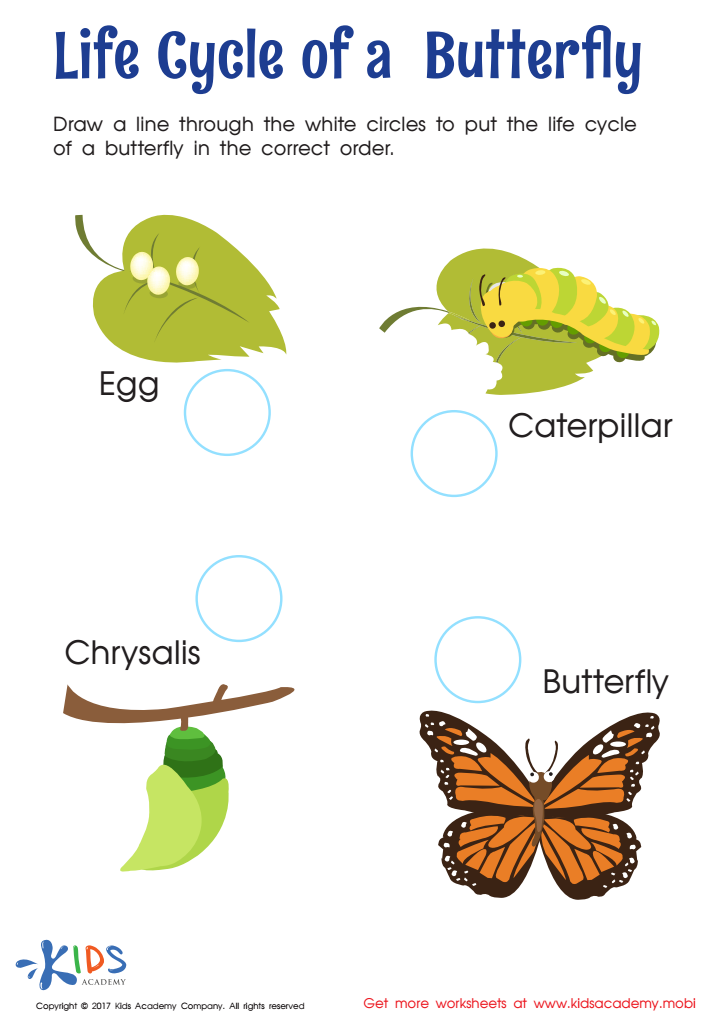

Life Cycle of Butterfly Worksheet
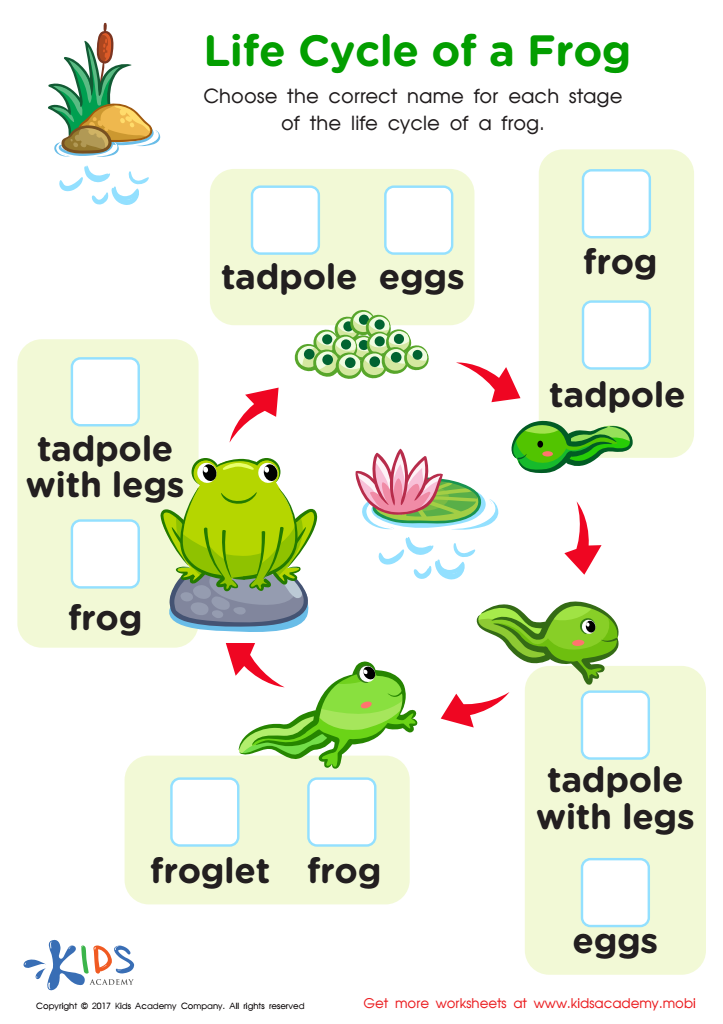

Life Cycle Frog Printable
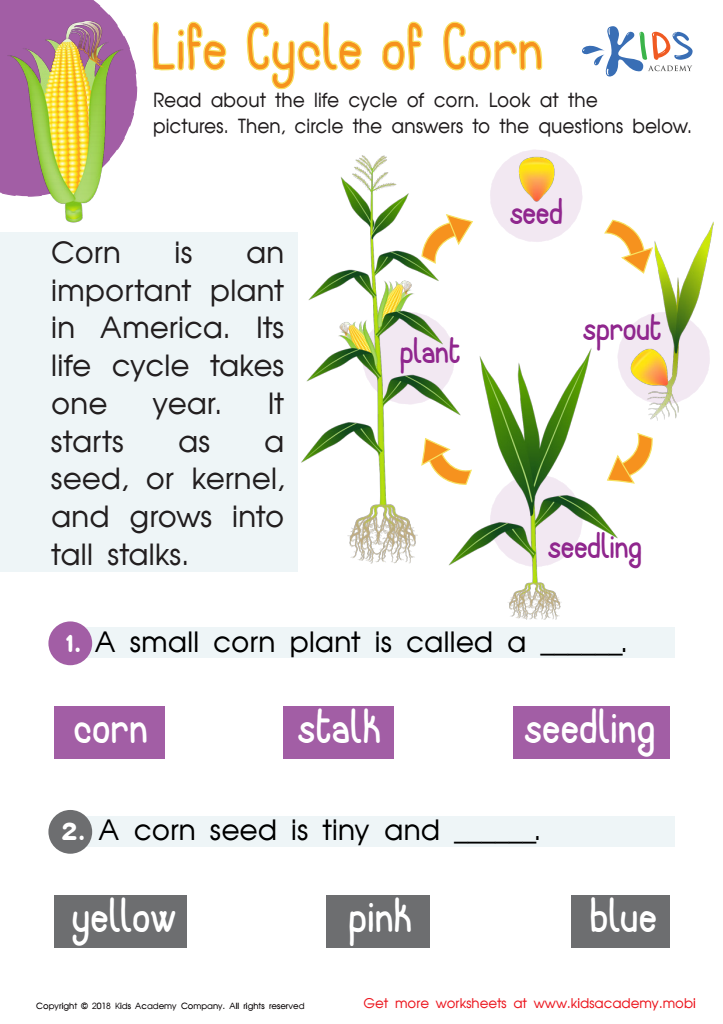

Life Cycle of Corn Worksheet
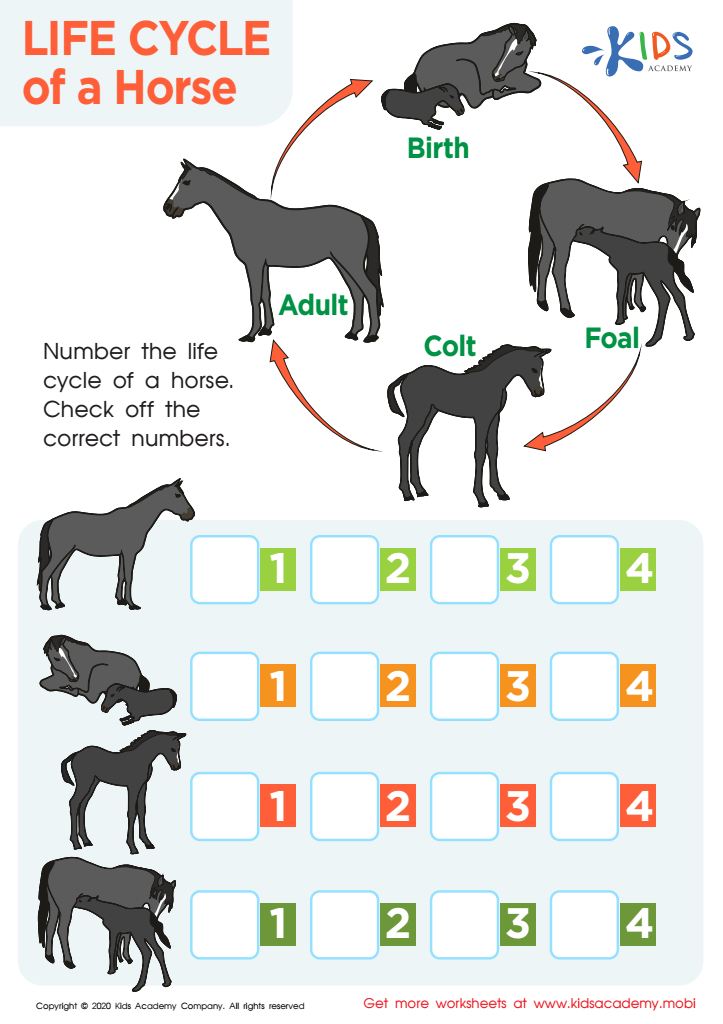

Life Cycle of a Horse Worksheet
Understanding life cycles of plants and animals is crucial for children ages 7-8, as it lays the groundwork for scientific literacy and fosters a sense of wonder about the natural world. At this age, children are naturally curious, and exploring life cycles helps them satisfy that curiosity. Through the study of life cycles, students learn about the interconnectedness of ecosystems, the process of growth, reproduction, and the importance of each species in an environment.
For parents and teachers, instilling knowledge about life cycles encourages children to appreciate biodiversity and the roles various organisms play. This understanding can cultivate responsibility toward the environment, as children recognize the fragility of ecosystems and the importance of conservation. Additionally, learning about life cycles supports critical thinking and observation skills, as students observe different stages of development and consider factors that influence growth.
Moreover, integrating life cycles into the curriculum can enrich interdisciplinary learning experiences, connecting science with art, language, and math. Participating in hands-on activities, like growing a plant or observing caterpillars transform into butterflies, makes learning more engaging. Ultimately, knowledge of life cycles equips young learners with essential skills and awareness, fostering environmentally conscious citizens of tomorrow.

 Assign to My Students
Assign to My Students

